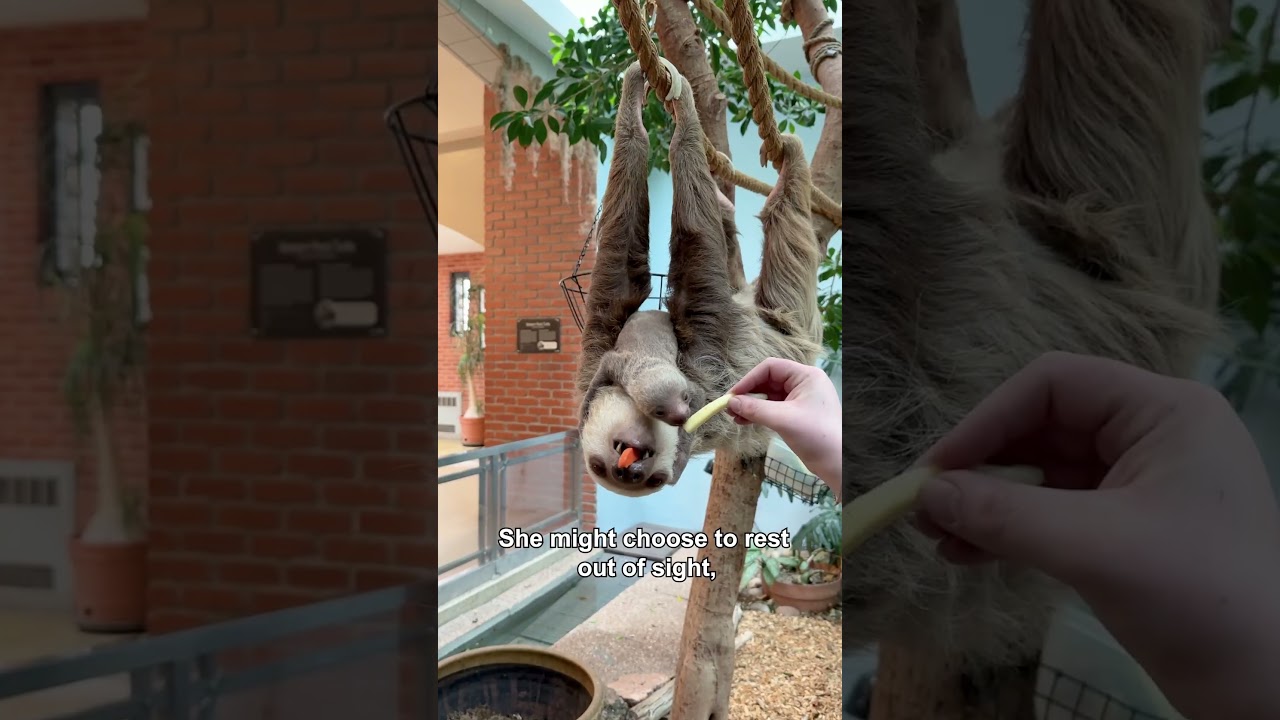- Introduction to the Baby Sloth and Its Habitat at the Zoo
- Zoological Aspects of Sloth Behavior and Physiology
- Conservation Efforts in Protecting Sloth Populations
- The Role of Zoos in Educating the Public about Wildlife
- Engaging Visitors with Interactive and Informative Displays
Our baby sloth is now visible to guests, marking a significant milestone for both the zoo and its visitors. This introduction not only brings the marvel of nature closer to the public but also serves a deeper purpose in educating individuals on the importance of sloth conservation. Understanding the habitat and natural behaviors of sloths provides insight into the unique challenges they face in the wild.
Sloths are arboreal mammals native to Central and South America, primarily residing in tropical rainforests. The zoo has meticulously recreated this environment to simulate the sloths’ natural habitat, ensuring the health and enrichment of the animals. With their adaptation to life in the canopy, sloths have developed a slow metabolic rate, allowing them to conserve energy while moving through the trees. This adaptive behavior is vital for survival in habitats where food resources can be scattered and inconsistent.
The physiology of sloths is fascinating. They possess a unique musculoskeletal system that allows them to hang effortlessly upside down for extended periods. This adaptation, coupled with their slow movement, is a defense mechanism against predators. The sloth’s diet mainly consists of leaves, buds, and tender shoots, which are low in calories. Consequently, their digestive processes are adapted to extract the maximum possible nutrients, often taking several days to digest a single meal completely.
In their natural habitat, sloths face numerous threats, such as deforestation, habitat fragmentation, and illegal wildlife trade. Conservation efforts are crucial in safeguarding their populations. Many organizations work tirelessly to protect these gentle creatures by preserving their natural habitats and combating illegal poaching. The integration of sloths into zoo environments plays a pivotal role in these efforts, allowing researchers to study their behavior and biology closely. This knowledge assists in formulating effective conservation strategies and raising awareness among the public.
Zoos have evolved from being mere recreational facilities to vital centers for education and conservation. By introducing visitors to the baby sloth, the zoo provides an educational opportunity, highlighting the significance of preserving biodiversity. Interactive displays and presentations about sloths offer guests a chance to learn about their unique lifestyle and the ecological challenges they face. These educational programs are designed to foster a connection between visitors and wildlife, encouraging a conservation-minded ethos.
The baby sloth’s presence in the zoo is more than a spectacle; it is a catalyst for awareness and advocacy. Engaging exhibits, combined with informative signage and media presentations, serve as a powerful medium for communicating the sloth’s ecological importance. Through innovative exhibit designs, guests are encouraged to look beyond the enclosure and understand the broader implications of wildlife conservation. Videos and live feeds enhance this experience, providing a dynamic view of the sloth’s life and behaviors in real-time.
The introduction of Our baby sloth is now visible to guests symbolizes the zoo’s commitment to wildlife preservation and education. By fostering curiosity and awareness, the zoo hopes to inspire a new generation of conservationists. It underlines the importance of protecting not only sloths but also the myriad species with whom they share their habitats. This endeavor highlights the interconnectedness of ecosystems and the need for sustainable conservation practices.
As environmental stewards, it is imperative to champion the cause of wildlife protection. The visibility of the baby sloth offers an invaluable educational experience, bridging the gap between the natural world and human curiosity. Each encounter with this gentle creature deepens our understanding of the natural world and ignites a desire to preserve it for future generations. The zoo remains a beacon of hope, demonstrating that education and conservation efforts can coexist to make a tangible difference.
*****
Source Description
Our baby sloth is now visible to guests! Aysan and her baby are getting comfy in Scutes Family Gallery, settling into the atrium with plenty of naps, explorations and snacks. Aysan chooses where she and the baby go, and sometimes that makes them hard to see. On your next visit, you could spot them napping high in the trees or having a meal at the lower ropes.
Aysan and her baby seem strong, confident and bonded. While the baby is nursing, it’s also curious about trying solid foods.
We do not yet have a plan for naming the baby, nor have we identified its sex. Stay tuned to our social channels for updates, and stop by on your next visit to see how this dynamic duo is doing!


